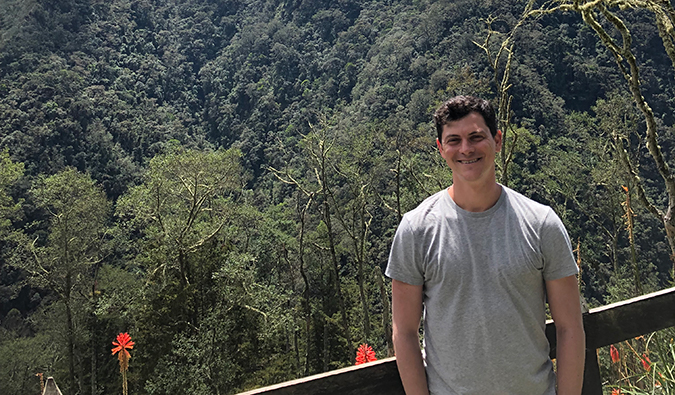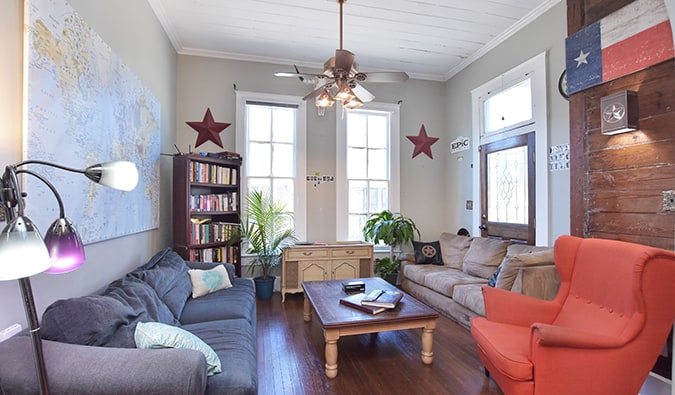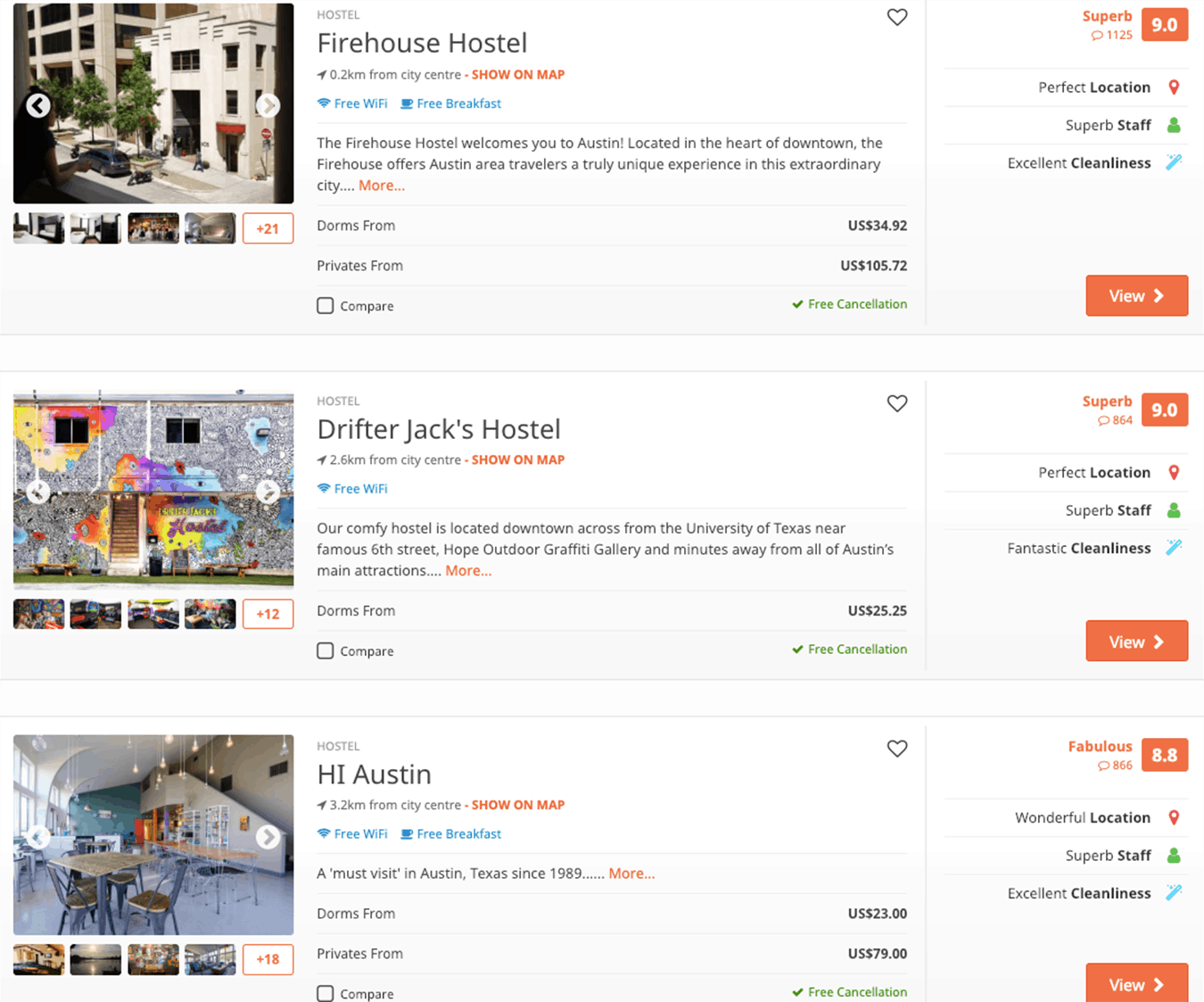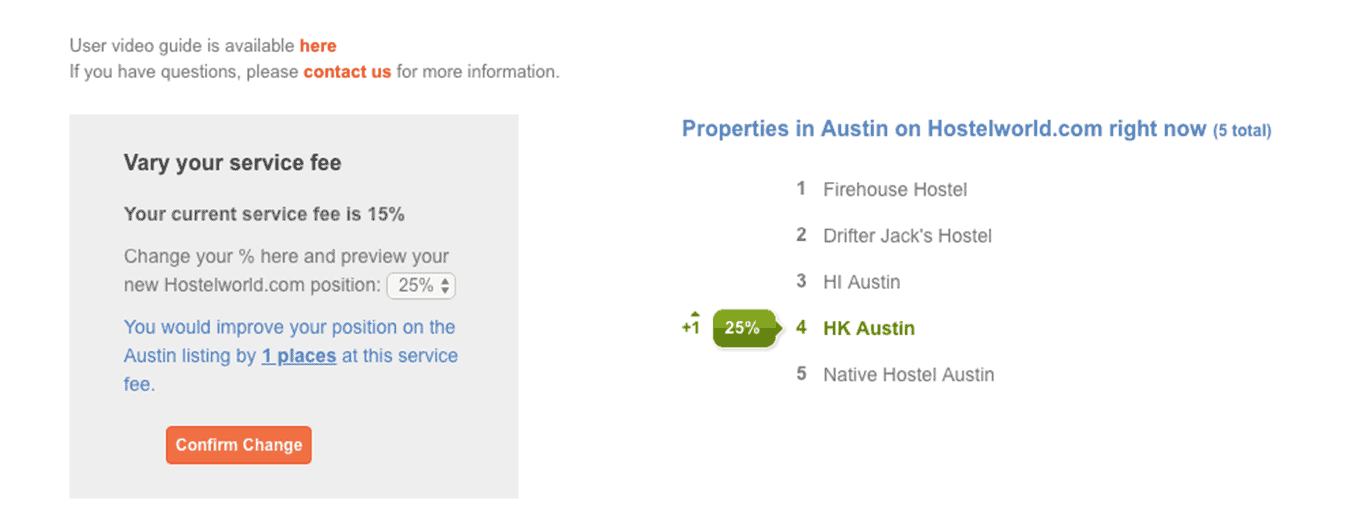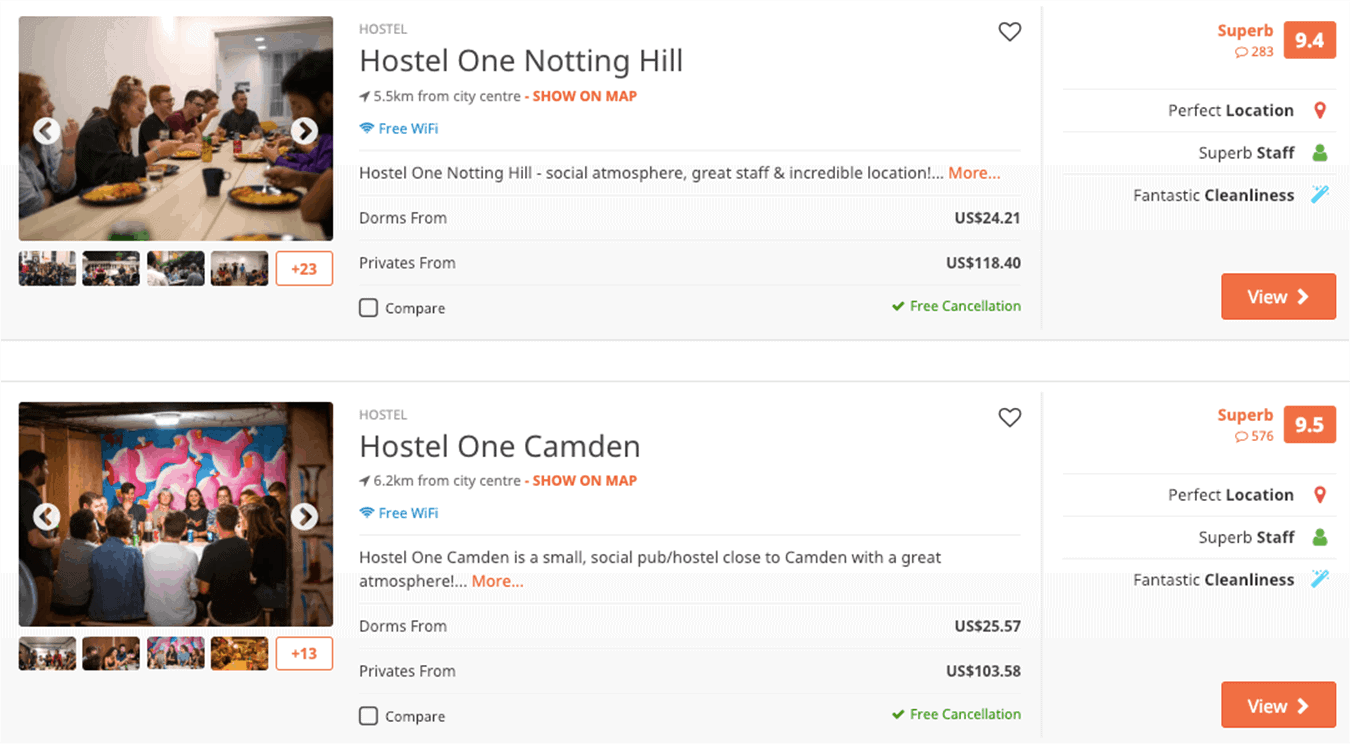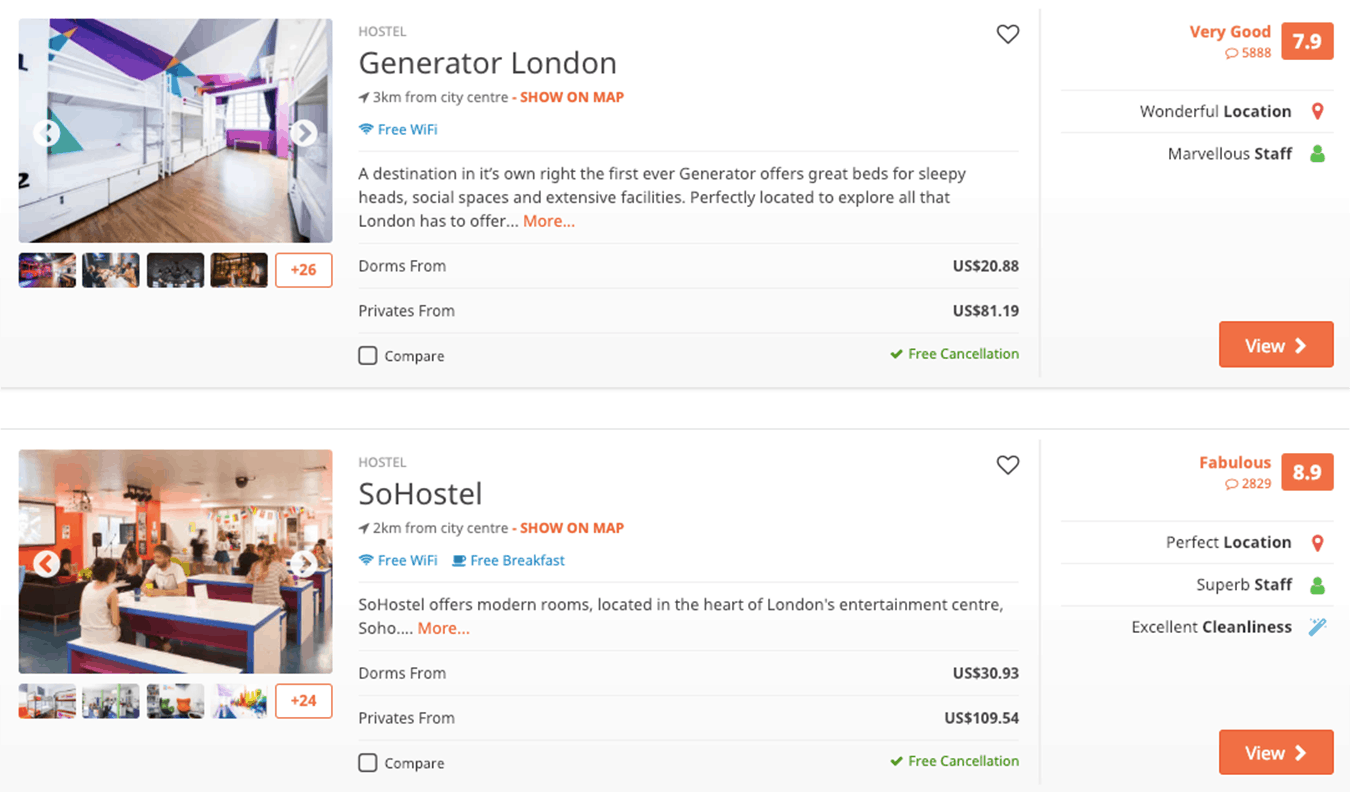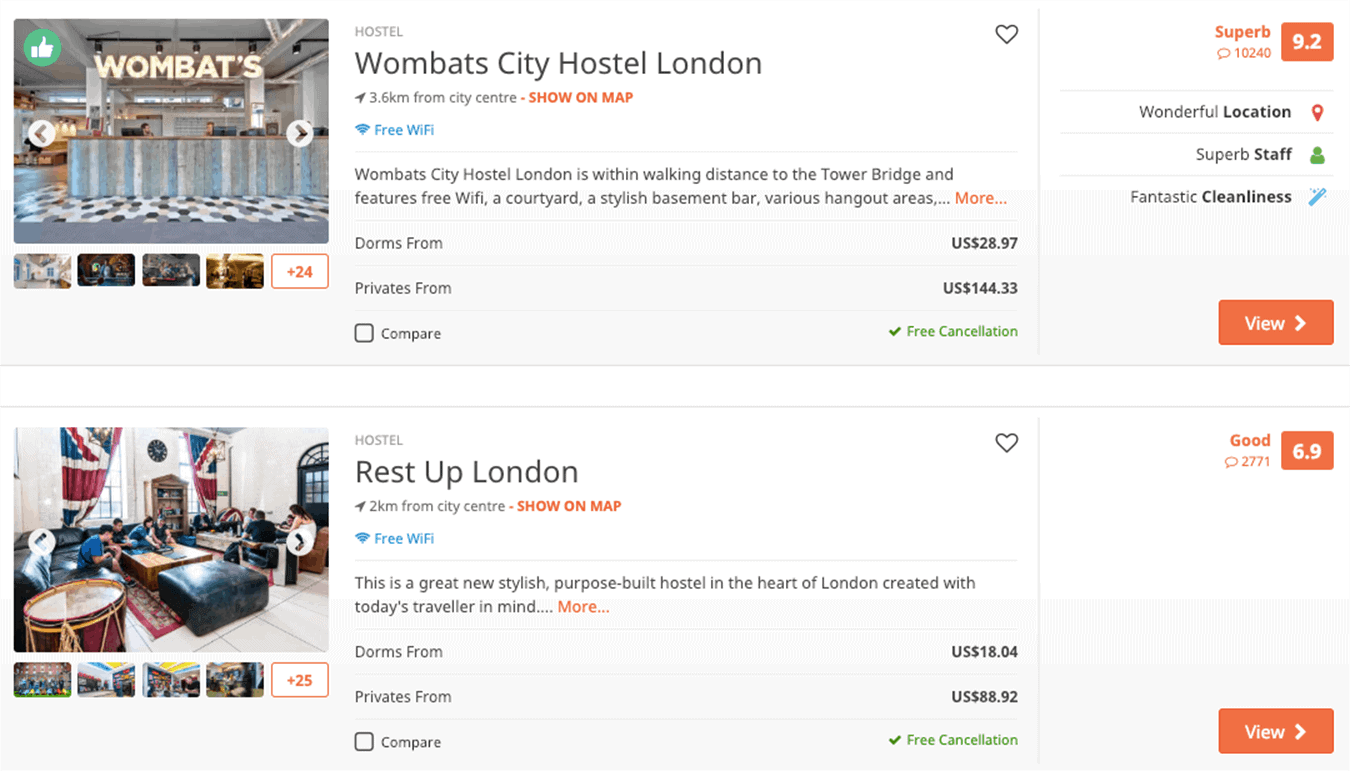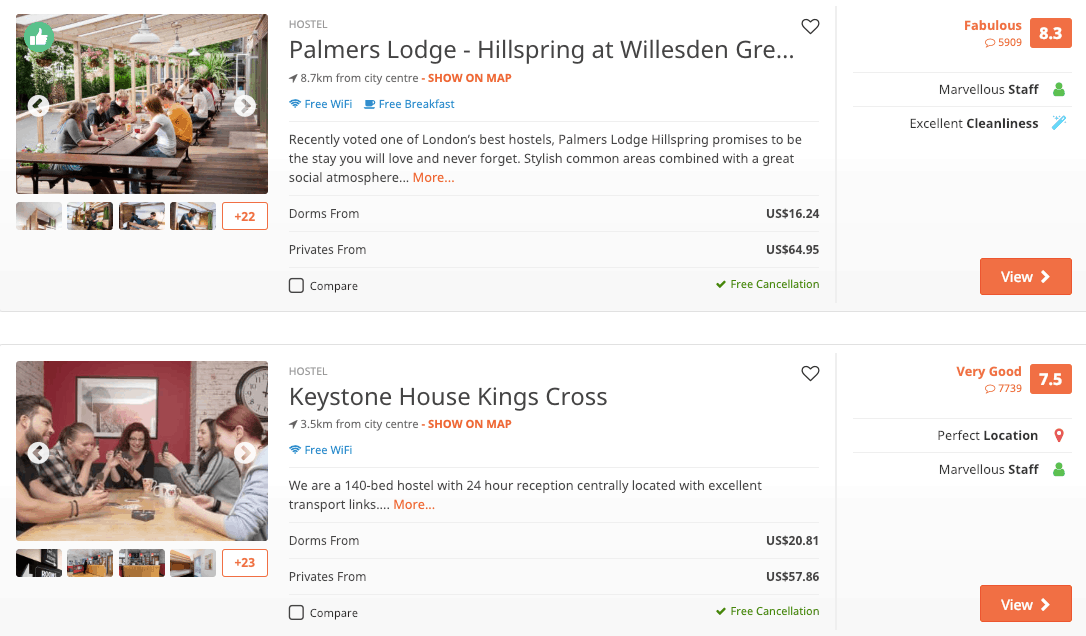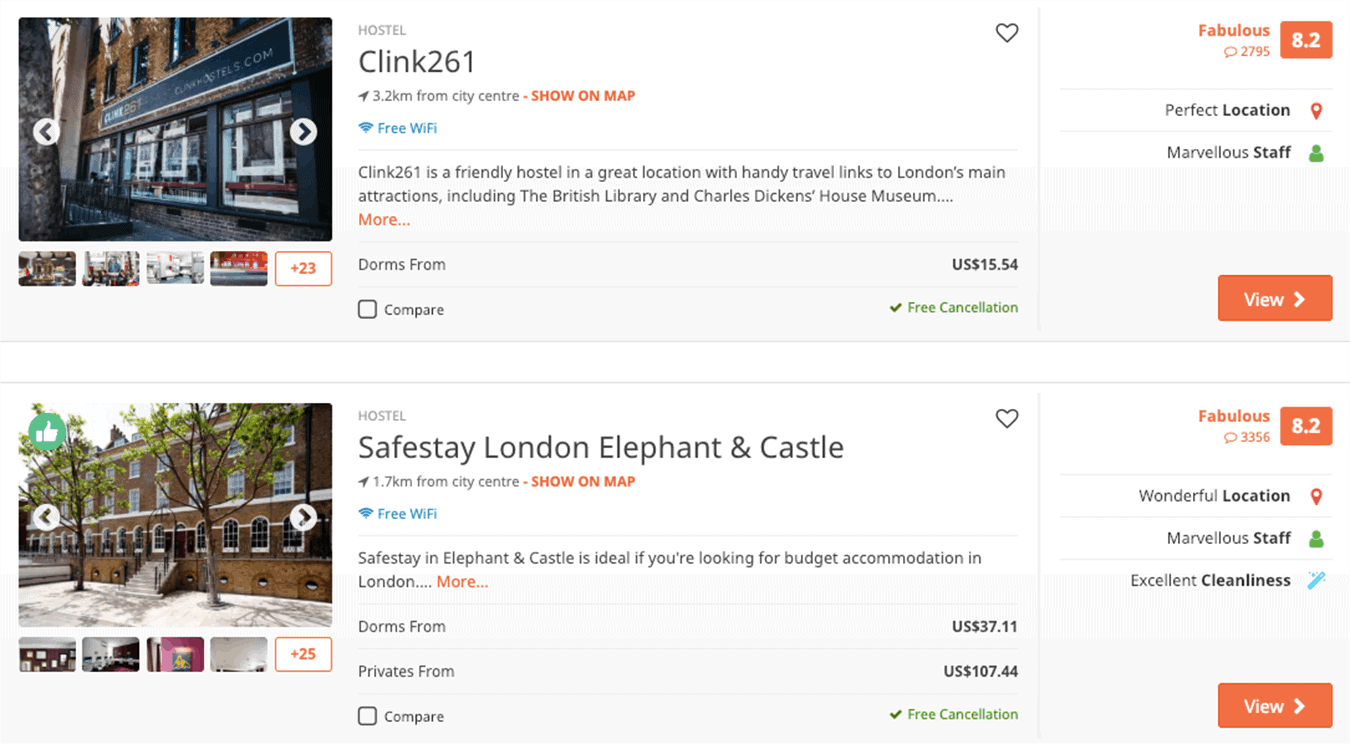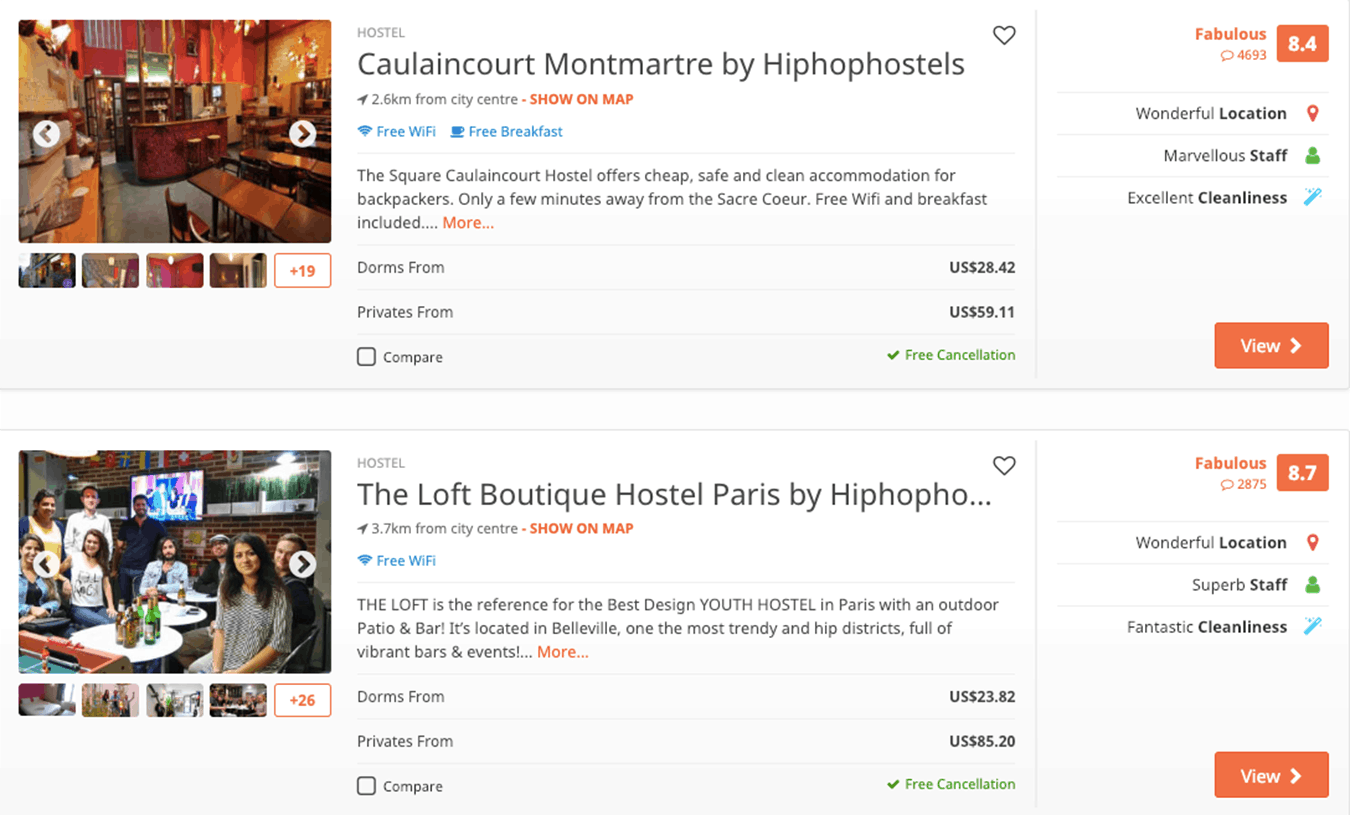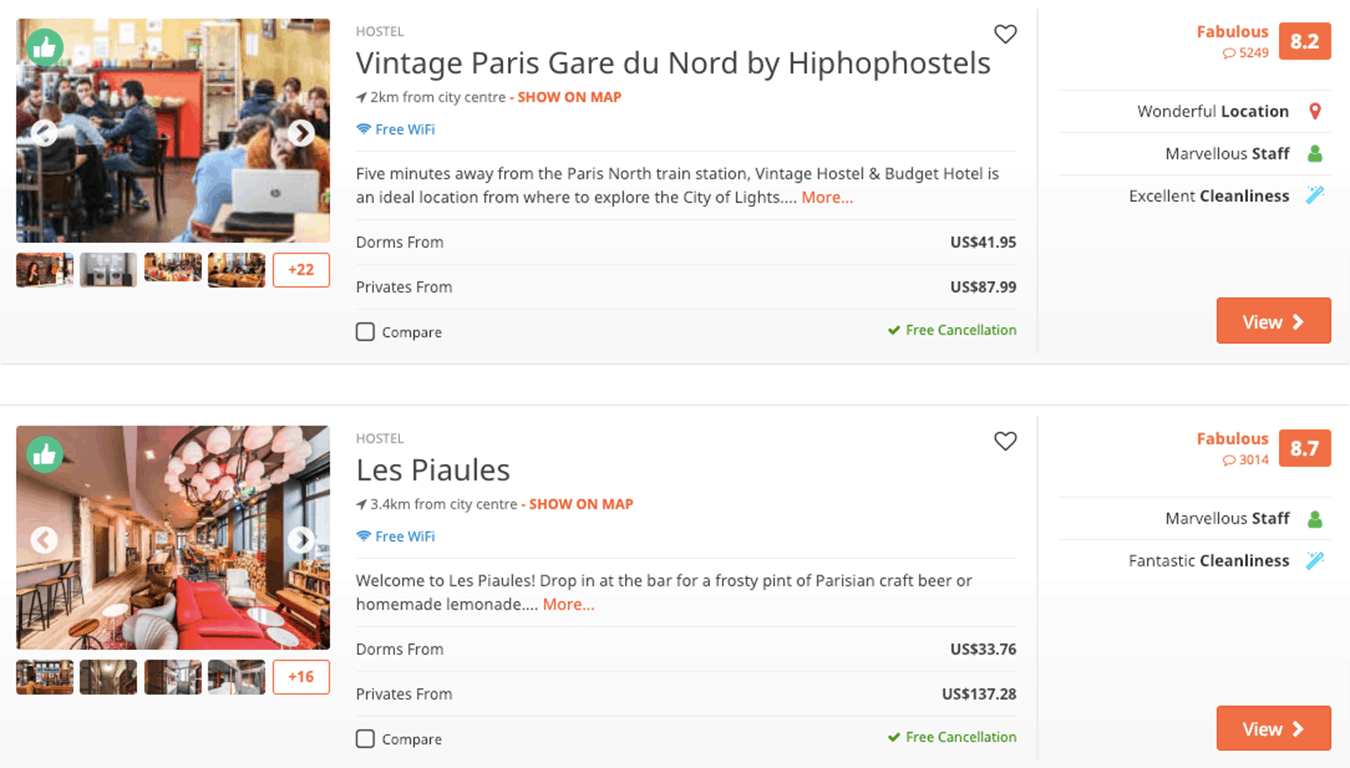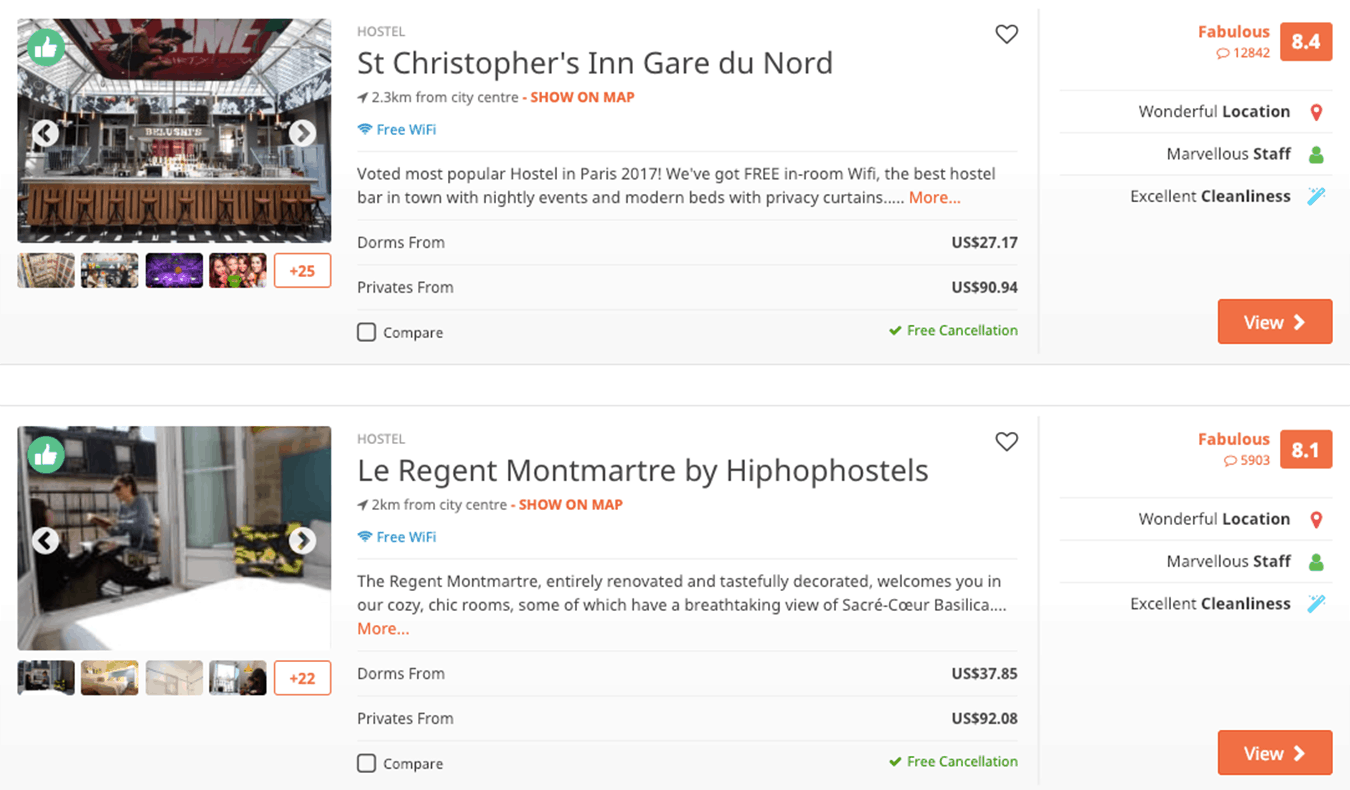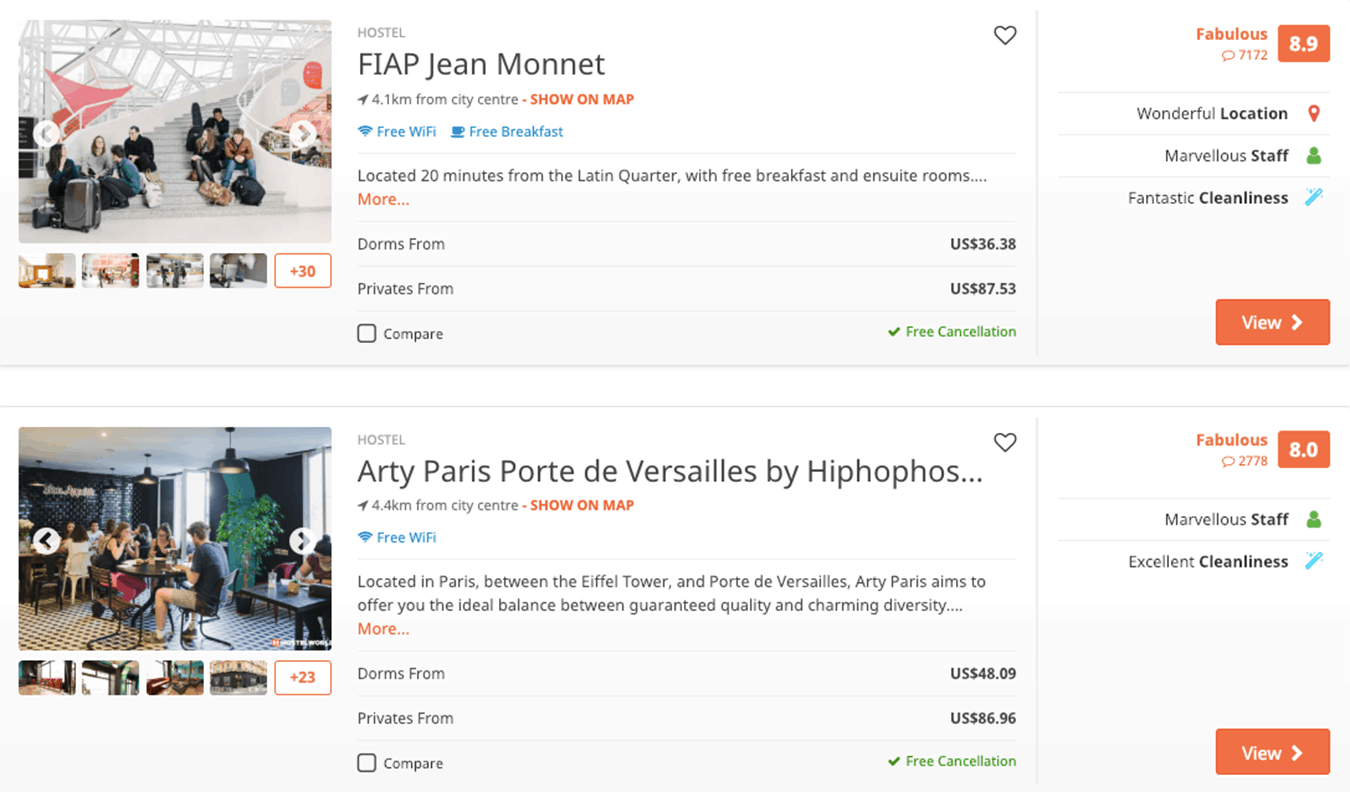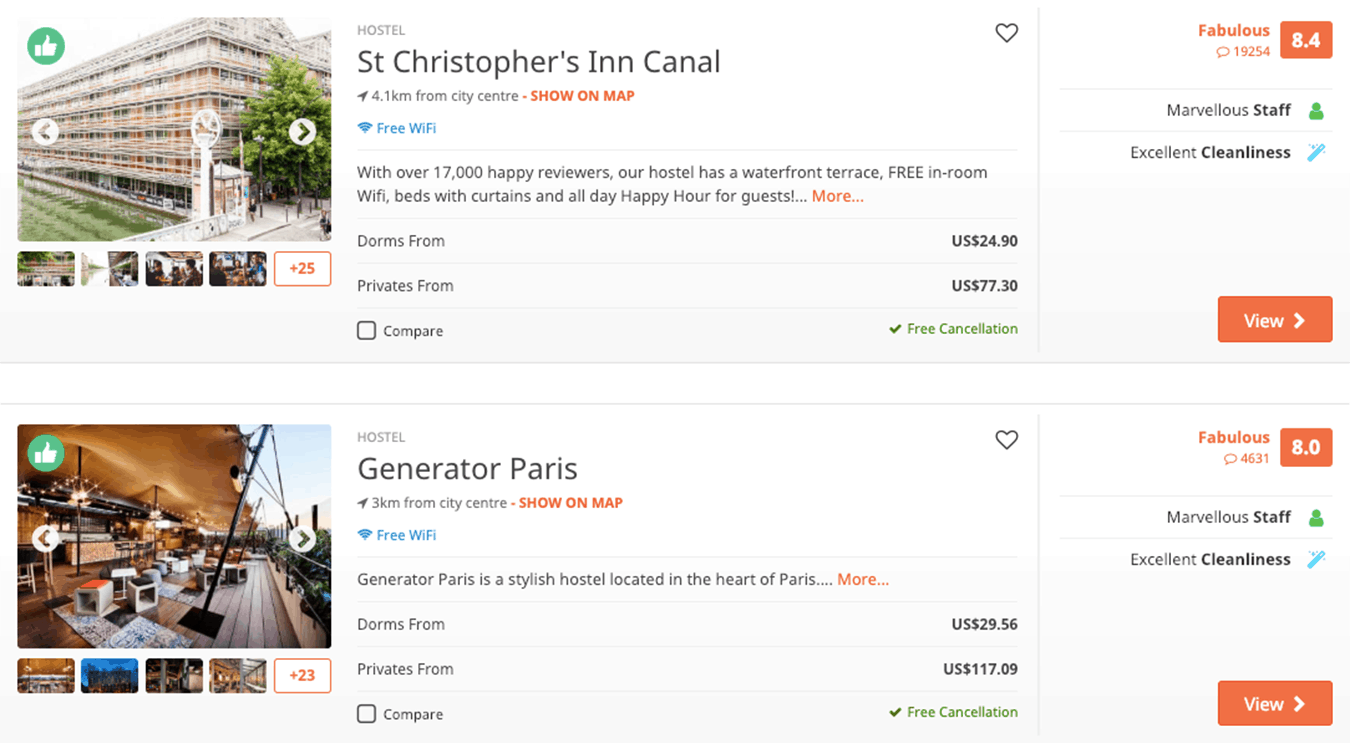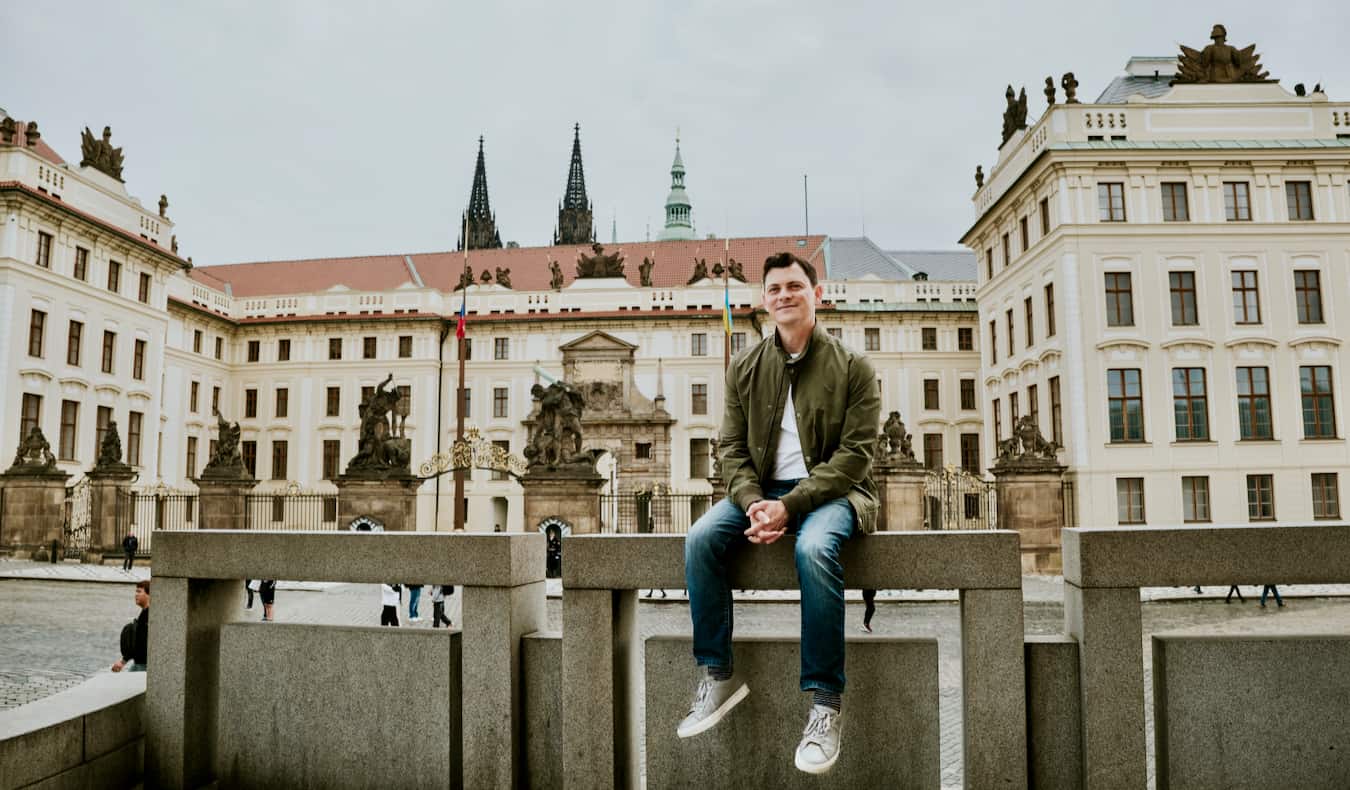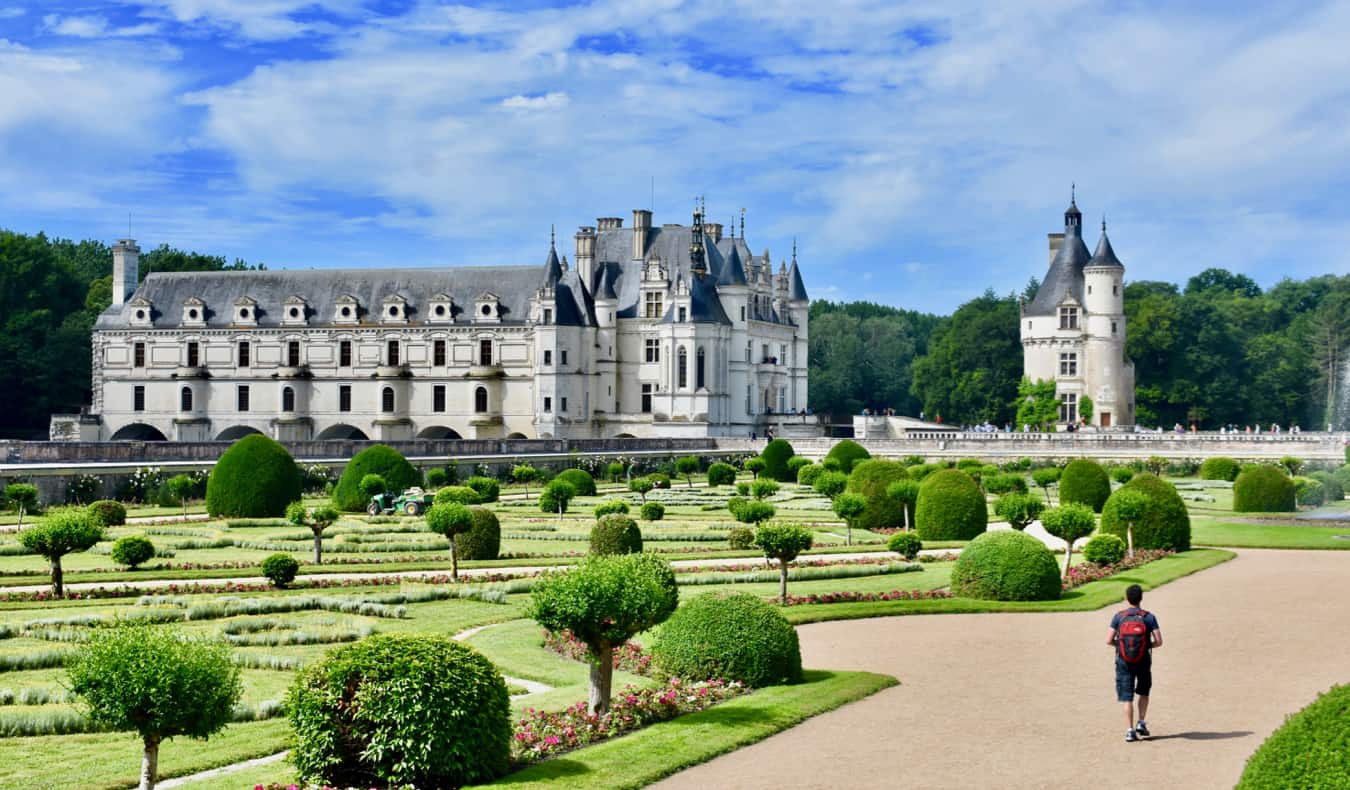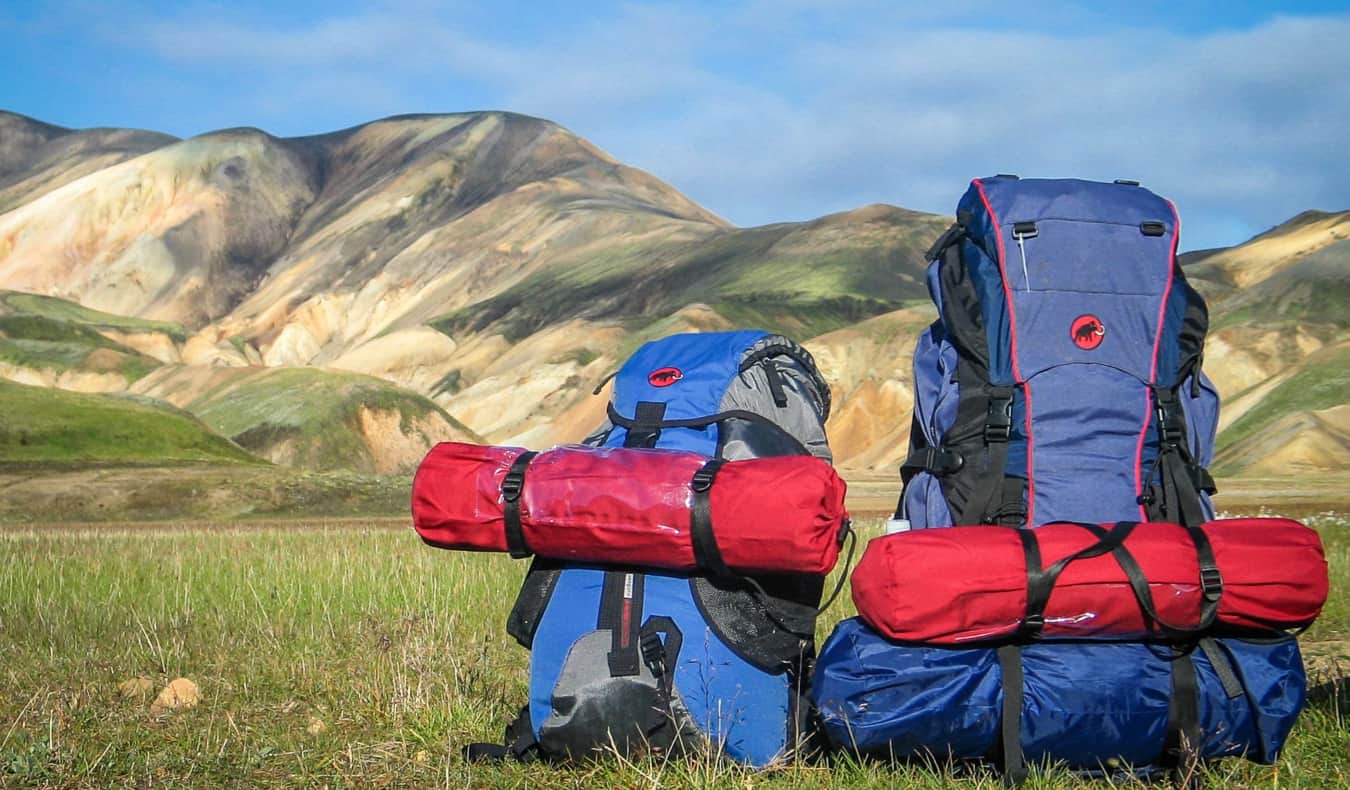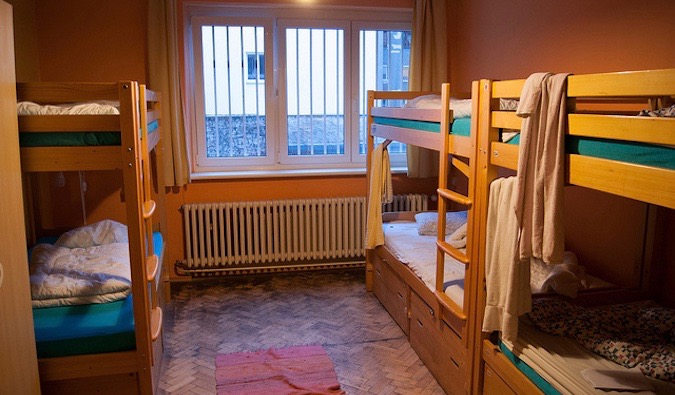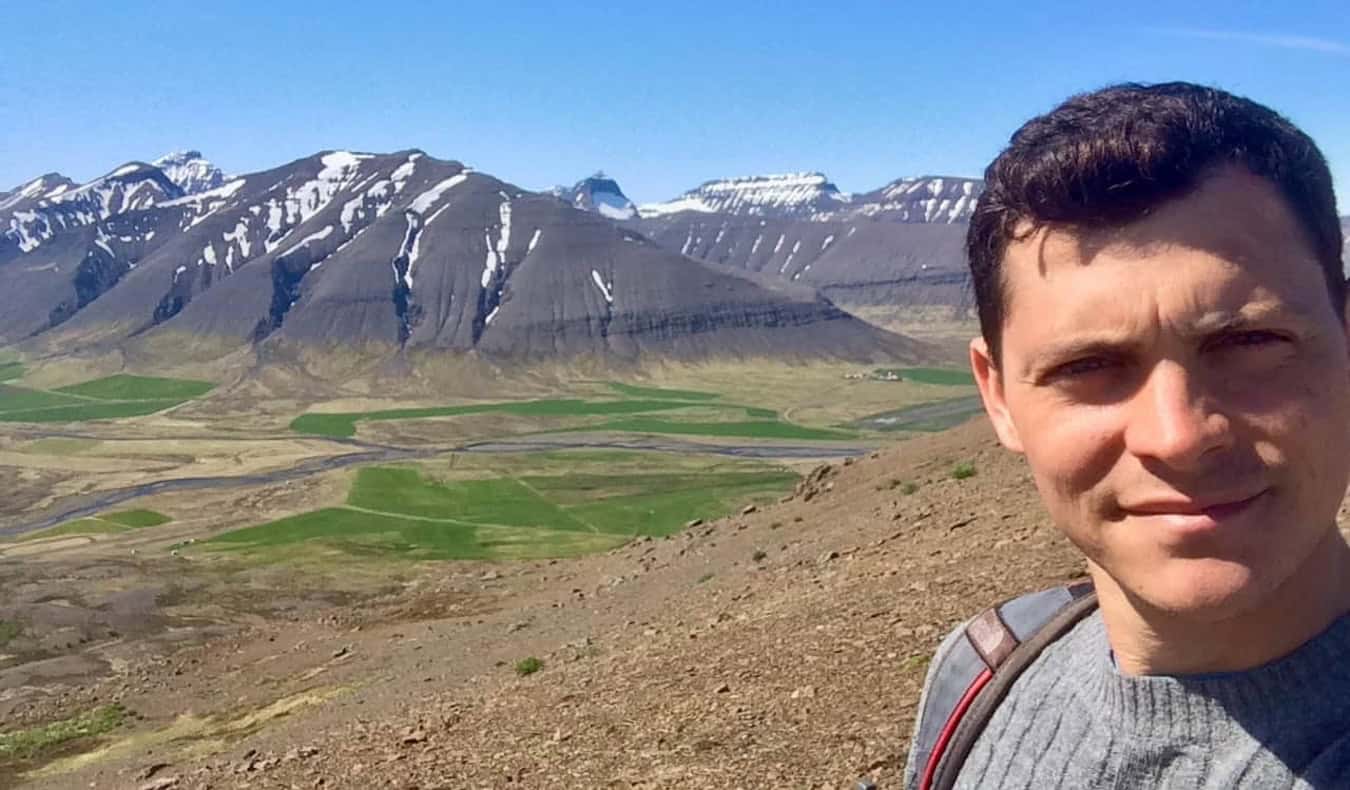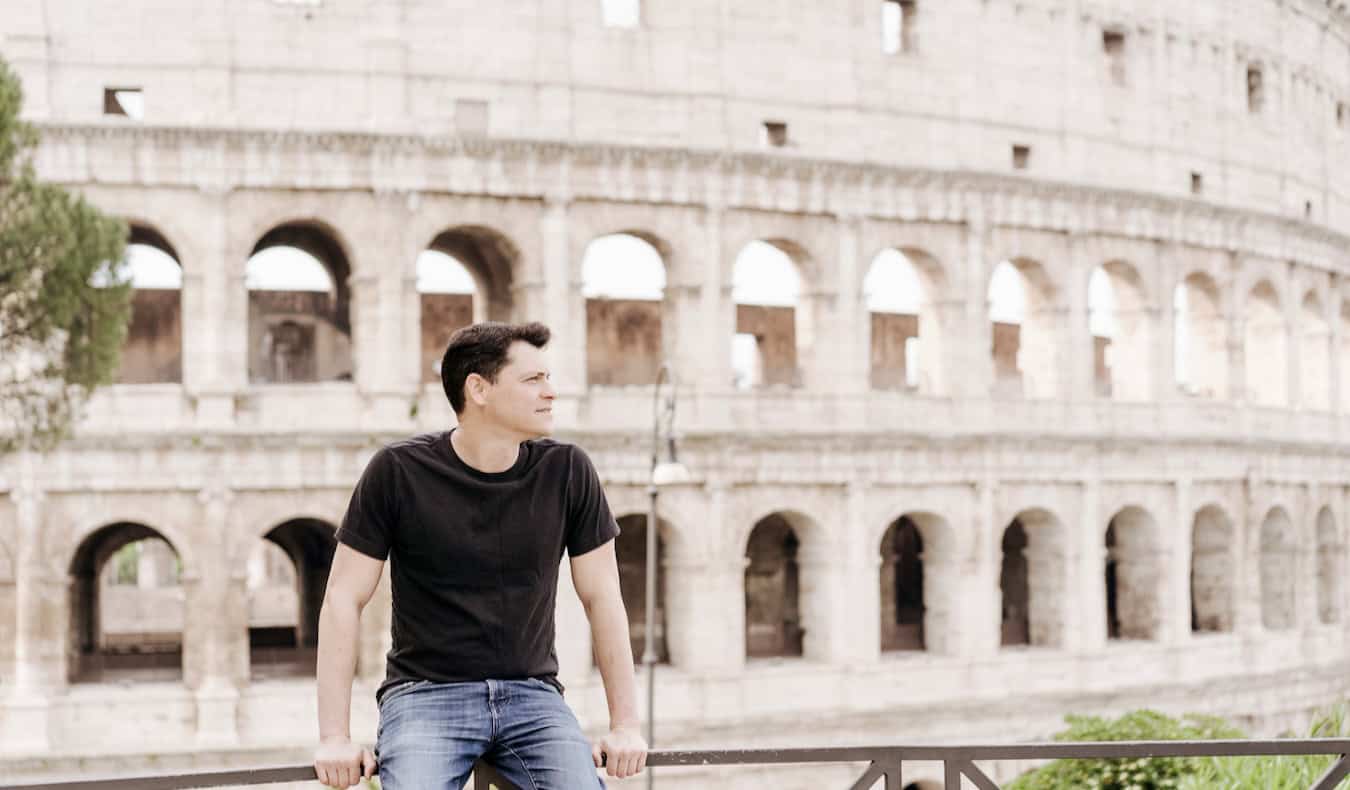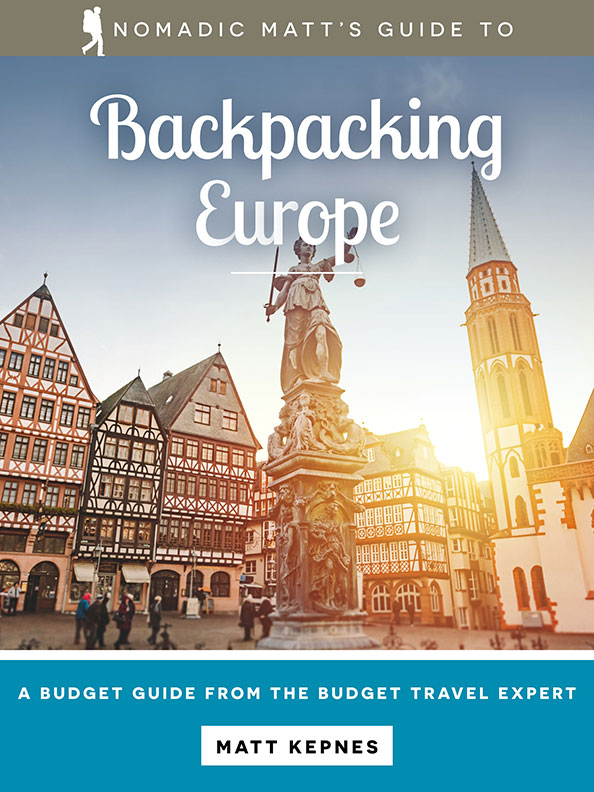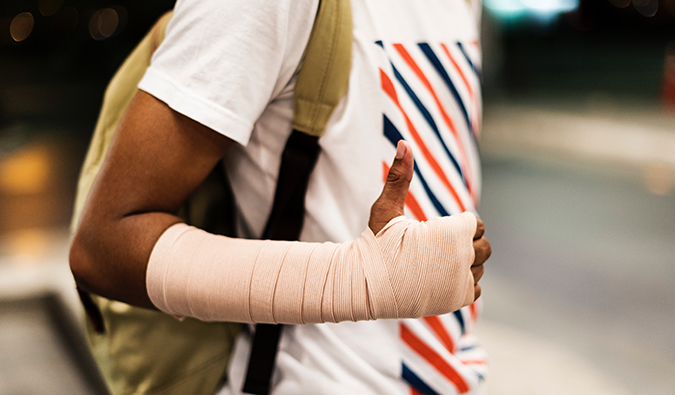
Posted: 1/24/2019 | January 24th, 2018
Windswept volcanoes. Black sand beaches nuzzled against rugged coastlines. Secret hot springs hidden in misty valleys while majestic waterfalls cascade from every hill.
Welcome to Iceland.
It’s a destination unlike any other in Europe. Its unique landscapes and natural wonders perfectly complement the modern capital of Reykjavik with its café culture and boozy, rambunctious nightlife.
Iceland is known as both the Land of Elves and the Land of Fire and Ice. It’s a country where you’ll find smoldering active volcanoes and vivid blue glaciers side by side. Horses and sheep dot the countryside, colorful puffins flock along the cliffs, and whales breach the choppy Atlantic waters that envelop this tiny island.
It’s easy to see why Iceland has become such a popular destination in recent years (all those cheap stopover flights have helped greatly too).
And, while it’s not the most budget-friendly country in the world, there are still ways to see the sights without breaking the bank!
If you’re planning a weekend getaway or want to drive the entirety of the island, this list of Iceland itineraries will ensure that you see the best the country has to offer!
What to See and Do in Iceland: One Weekend in Reykjavik
Day 1

Take a tour of the city
I always like to start my trips with a free walking tour. They’re a fantastic way to see a destination, learn about its history and culture, and get all your questions answered by someone who knows what they’re talking about. City Walk and Free Walking Tour Reykjavik both offer great free tours of the city. They’ll help you get a sense of Reykjavik so you can decide what you want to revisit later. The tours are donation based, so just make sure to tip your guide!
Explore Laugavegur
When you’re in need of a coffee or snack, go for a stroll down Laugavegur, a shop- and café-lined street in the center of the city. This is the oldest (and coolest) street in Iceland, and you’ll find everything from expensive couture to dollar stores here. Be sure to stop in a bakery for a pastry or a coffee. My personal favorite is Mokka Kaffi.
Visit a museum
After that, make your way to the National Museum of Iceland, where you will learn everything you need to know about this tiny Nordic nation. The most famous piece in the collection is the Valþjófsstaður door, a piece carved in the Middle Ages that illustrates the saga of the lion and the knight. The museum does a fantastic job of giving you a robust history of the country without being boring.
If you’d rather visit a more unconventional museum, consider a visit to the Icelandic Phallological Museum instead. Colloquially known as the Penis Museum, this small institution is home to the world’s largest collection of penises and penis-themed art. Yes, you read that right! There are almost 300 items in the museum, including whale penises and (allegedly) troll penises! It’s a small museum, but it’s actually incredibly informative — if you’re not too shy!
National Museum: Suðurgata 41, +354 530-2200, thjodminjasafn.is. Open daily 10am-5pm (closed on Mondays in the winter). Admission is 2,000 ISK (1,000 ISK for students/seniors).
Icelandic Phallological Museum: Laugavegur 116, +354 561-6663, phallus.is/en. Open daily 10am-6pm. Admission is 1,700 ISK per person.
Go for a swim
Once you’ve gotten tired of walking, go for a refreshing swim in the Laugardalslaug Geothermal Pool. Swimming and saunas are how locals relax and unwind after work. It’s basically a national pastime. This pool is Iceland’s largest and was built in 1968. It’s actually a whole complex with hot tubs, a thermal steam bath, a waterslide, and even mini golf! If you have extra time, check out the nearby garden and zoo too.
Sundlaugavegur 105, +354 411-5100, reykjavik.is/stadir/laugardalslaug. Open weekdays 6:30am-10pm and weekends 8am-10pm. Admission is 625 ISK, though if you have the Reykjavik City Card, it’s free!
Take in the nightlife
End your day enjoying the city’s famous nightlife back around Laugavegur. This is one of the best party cities in the world, so there’s something for everyone. Just make sure to go during happy hour so you don’t blow your budget (alcohol in Iceland is not cheap!). Here are a couple of my favorite hotspots in Reykjavik:
- Kaffibarinn – This café transforms into a dance club on the weekend, and it’s a great place to party. The space is divided into three different sections (bar, dance floor, and lounge), so you can find a section for however you want to spend your night out. It’s small, so seats can fill up quickly. Bergstaðastræti 1, +354 551-1588, kaffibarinn.is.
- Lebowski Bar – Yes, this is a Big Lebowski–themed bar. The inside looks like a vintage American diner and bowling alley. And, since The Dude drinks a lot of White Russians, its menu includes a wide variety of different ones. Its signature Lebowski cheeseburger is pretty good too. Spin the prize wheel to win up to 10 free beers! Aim for happy hour, which is held daily 4pm–7pm, as drinks are cheaper then. Laugavegur 20b, +354 552-2300, lebowskibar.is.
- Slippbarinn — This is the first proper cocktail bar in the city and boasts live music and DJs several nights a week. Happy hour is daily 3pm-6pm. Myragata 2, +354 560 8080, slippbarinn.is.
Where to stay in Reykjavik: Hlemmur Square – If you’re looking to splash out, this is both a cozy hotel and an upscale hostel, so you have options for your type of stay. There’s a great bar here, plus traditional Icelandic communal dinners several times a week.
For a more standard hostel, stay at Kex Hostel. It has a café and bar with an awesome happy hour, a comfy lounge, and a heated patio.
Day 2

Explore the Golden Circle
The Golden Circle — comprising the Gullfoss waterfall, the Strokkur geyser, and Þingvellir National Park — is the biggest tourist draw in Iceland, so you’ll want to start your second day early and head out of town in a rental car (or on a tourist bus). As tourism booms in Iceland, these sites can get a little crowded, so make sure you get there early (especially in the summer and on weekends).
The round-trip journey is around 250km, so plan accordingly when it comes to food and fuel (if you’re driving). If you’re driving, you’ll also be able to stop regularly to see the many Icelandic horses that you’ll pass by.
Experience the famous Blue Lagoon
This is one of the most iconic destinations in Iceland. The pools are quite large, and the whole area is steamy, with the water a stunning milky-blue color that is rather photogenic (which is why the lagoon is so popular on social media). It’s a beautiful and luxurious way to end the day, and a great place to relax right before you depart.
Personally, I think the place is a bit overhyped, as there are tons of free, secluded hot springs all around the country. Of course, if you’re short on time and don’t plan on leaving the city, then it’s the perfect way to end your trip!
Fun fact: The Blue Lagoon is simply runoff from the nearby geothermal plant. Icelanders just found a way to monetize it for tourists! Thank you, Instagram? Ha!
Norðurljósavegur 9, +354 420-8800, bluelagoon.com. Open daily, but hours vary, so check the website for an up-to-date schedule. Admission starts at 9,990 ISK per person, but it can be cheaper if you go during certain hours.
READ MORE: How to save money in Reykjavik
What to See and Do in Iceland: Four Days in the South
In addition to the itinerary above, here are some activities you’ll want to add if you plan on getting further outside of Reykjavik to explore the southern region of Iceland.
Day 3

Experience nature
Head southeast on the Ring Road from Reykjavík to scout out some waterfalls. Be prepared and bring swimsuits, towels, a waterproof camera, and a jacket.
- Reykjadalur – Stop in the town of Hveragerði to visit the Reykjadalur hot spring (or hot pot, as they are known locally). It offers a gorgeous backdrop of rolling hills and mountains, and it’s free to enjoy. You’ll need to hike a bit to get there (30-40 minutes), but it’s worth it! Keep in mind that there’s not a private changing area here, so you may want to wear your swimsuit under your clothes.
- Seljalandsfoss – Continuing on the Ring Road, you’ll come to the picturesque Seljalandsfoss waterfall. It has a drop of 60m and is another highly photographed spot in Iceland, so try to get there early before the tourist buses. You have to pay for parking, but otherwise it’s free. If you’re hungry, there’s a food vendor that sells delicious lamb stew (among other things).
- Skógafoss – Another epic waterfall is Skógafoss. Legend says that you can find a treasure chest behind this massive waterfall. This is also the starting point for a long, multi-day hike, but you can also just climb to the top and walk for as long as you’d like before returning. There’s a small museum nearby as well if you want to learn more about the history of the waterfall.
- Seljavallalaug – This hot pot is located a short walk off the Ring Road. It’s not super hot, and the change room has seen better days, but it’s secluded and it’s worth it just for the scenery, as its located at the bottom of a deep valley.
Make Your way to Vík
Head to the charming little town of Vík and spend the night there. Vík is a seaside village with a glacier that covers the Katla volcano. It’s also home to some amazing black sand beaches and a DC-3 plane wreck in Sólheimasandur (located on the coast between Skógafoss and Vík).
Where to stay in Vík: Vík HI Hostel – This charming hostel has a café/bar, a female-only dorm, rooms for families, and a kitchen so you can cook your own food if you’re on a budget.
Day 4

Chill at the beach
Wake up in Vík and go for a stroll on the otherworldly Reynisfjara black sand beach. There are some offshore rock formations you can see from the shore and from the cliffs above if you feel like a hike. If you’re here from May through August, you may even get to see some puffins!
Take in the view
If there’s time, head up the hill to see the small Vík i Myrdal Church. It overlooks the town and gives a complete view of Vík and the ocean. Grab a coffee at a local café and enjoy the scenic vista.
Head for home
Head back to Reykjavik. See more sights, chill in more cafés. Do whatever you want before you head home! (sad)
What to See and Do in Iceland: Four Days in the North
If you want to get away from the crowds, go north. Northern Iceland is one of the least-visited regions of the country and has a lot to offer the intrepid adventurer, including majestic hikes, more varied landscapes, whale watching, fewer people, and a better chance to see the Northern Lights!
Day 1

Travel north to Akureyri
Start your adventure off by flying north to Akureyri from Reykjavik. If you don’t want to fly, it’s a 5-6-hour drive from Reykjavik up the west coast, which can easily be done in a day. You’ll just want to factor in a few stops along the way to sightsee!
Explore Akureyri
Take a self-guided tour of the town, visit the Akureyri Botanical Gardens, get an espresso from the picturesque Laut Café, hop in the local swimming pool, or just explore the relatively small town and sip on some kaffi (coffee) and “happy marriage cake” (rhubarb jam–filled pastry with a buttery oat crust) from Kristjánsbakarí. Soak up local life as much as you can before you go!
Where to stay in Akureyri: Akureyri Backpackers – This is a laid-back hostel with a cool bar, great staff, and really hot showers!
Day 2

Visit the Waterfall of the Gods
Make your way to Goðafoss, the Waterfall of the Gods. It’s a majestic semicircular waterfall that’s close to Akureyri on the Ring Road. The waterfall is over 12m tall and 30m wide, and (not surprisingly) is highly photogenic! Enjoy the view before heading onward to Mývatn.
Head to Mývatn
Spend the day in Mývatn, starting off with a hike around Lake Mývatn. There is an easy trail you can follow that lets you stretch your legs and enjoy the natural beauty of the region. You can easily hike the lake in a few hours if you go at a leisurely place. Then head to the Mývatn Nature Baths geothermal pool, which is much quieter (and cheaper) than the Blue Lagoon.
There’s not much else to do here. It’s a quiet town for relaxing, but the lack of lights makes it a wonderful place to see the northern lights!
Spend the night in Mývatn at one of the many Airbnbs, guesthouses, or farm stays in the region.
Day 3

Pretend you’re on Mars
Next, you’ll want to head toward the coastal town of Húsavík. On your way there, stop at Hverir and Krafla, two geothermal areas with Martian-like craters and lakes. Steaming sulfur fills the air, giving this whole area an otherworldly ambience. You can just stop to take photos or go for another hike.
Visit Dettifoss
Next, head to Dettifoss, Europe’s most powerful waterfall. There are two roads leading here from the Ring Road: 862 and 864. The latter is ridden with potholes, but in my opinion offers the better view. Just drive slowly and keep an eye on your tires! Enjoy a snack by the waterfall and take in the scene. When you’re ready, drive to Húsavík (you can take the 864 north from Dettifoss).
Visit the Whale Museum
Whaling has been a part of Icelandic culture for centuries. And while there is a global moratorium on hunting whales, it’s still worth learning about these massive creatures, their habitat, and their impact on the country. They also have a full blue whale skeleton!
Hafnarstétt 1, +354 414-2800, hvalasafn.is/en. Open daily with hours varying depending on the season. Admission is 2,000 ISK per person, with discounts available for seniors, families, and kids. If you go whale-watching with Gentle Giants, you’ll get 20% off your museum ticket.
Where to stay: Spend the night in sleepy Húsavík at a local guesthouse or Airbnb. If it’s northern lights season, stay at Arbot HI Hostel. The hostel is in a relatively secluded spot outside of town so you’ll have a great view of the dancing lights without having to worry about light pollution.
Day 4

Watch the whales and explore the coast
Wake up early, head to the coast, and go whale-watching. There are a few different companies you can book tours with here, including Gentle Giants, who have a partnership with the Whale Museum (see above). Whale-watching tours usually last around 3 hours. Expect to pay around 10,400 ISK for adults and 4,400 ISK for children.
When you’re done, explore the hiking trails around Húsavík. You can find a list of the trails on the Visit Húsavík website. Pop into some of the local shops and cafés to get a sense of small-town life here in Northern Iceland.
See some unique architecture
Travel to nearby Laufás, which is located west of Húsavík. Here you’ll get to see the old turf houses, traditional Icelandic homes that are timber framed and covered in grass. The furnishings are from around 1900, and you’ll feel like you’ve traveled back in time. While in Laufás, take a small detour and check out the church. Inside is a decorative pulpit from 1698!
Have an Icelandic feast
Go back to Akureyri to explore the city and dine on fresh fish and chips from Akureyri Fish & Chips. Don’t forget to sample the country’s famous ice cream from Brynja too!
Note: I know it sounds like a lot, but if you have a car, this itinerary is very doable.
What to Do In One Week in Iceland: Golden Circle and Southern Iceland
Day 1-2

Head East
Fly into Keflavík International Airport and rent a car (SAD Cars and Car Rental Iceland are the companies I recommend). Head east from Reykjavík along the Ring Road to start your adventure!
Soak in the hot springs and search for puffins
Head east for a soak in the Reykjadalur hot springs in Hveragerði. Camp or stay at the hostel nearby so you can get another soak in before heading onward.
To get a bit off the beaten trail, take the ferry to the Westman Islands for the afternoon or an overnight stay (you’ll find plenty of puffins here during the summer season!). There are very few tourists here, so it’s a nice way to escape the crowds and relax.
Chase some waterfalls
Venturing onward along the Ring Road, head to Seljalandsfoss and Skógafoss waterfalls. At Skógafoss, the 29km Fimmvörðuháls Trail begins. If you want to hike the entire trail, you can stay at the Volcano Huts at the end of the route and then take a bus back to Skógafoss in the morning. If you’re fit, you can do this hike in a day. Otherwise, you’ll need to bring tents and camp halfway. If an epic hike isn’t in the cards, stroll around the area before continuing east toward Vík.
Tour a crash site
Before you get to Vík, you’ll want to check out the DC-3 plane wreck in Sólheimasandur. It’s about a 45-minute walk from the Ring Road, but it’s worth it to see the crash up close (you can no longer drive directly to the site). Dress appropriately, as it can get windy near the coastline.
Spot puffins
Continue on to Vík and stop to see the black sand beaches. There are also two short hikes nearby that take you up the cliffs. They offer incredible views of the areas, and if it’s the right season, you can go puffin spotting!
Where to stay: For your first night, stay at the Hot Springs Hostel in Hveragerði (right near the hot spring). That way you can wake up early and go for another soak before you leave. If you’re on the Westman Islands, stay at Aska Hostel (or book one of the many private guesthouses for a cozy local experience). When you get to Vik, stay at Vík HI Hostel.
Days 3-4

Hike Fjaðrárgljúfur Canyon
This 2km-long canyon dates back to the Ice Age. It’s over 100m deep and makes for a great place to hike or have a picnic and enjoy the view. The road to get there is full of potholes, so drive carefully.
Explore Vatnajökull National Park
Hike in the Skaftafell wilderness area to see the glaciers of Vatnajökull National Park. There are plenty of hikes here, both long and short, for outdoorsy types. For a shorter hike, head to Svartifoss, another photogenic waterfall surrounded by long columns of black basalt (the waterfall’s name literally translates to “the black waterfall”).
Klapparstígur 25-27, +354 575-8400, vatnajokulsthjodgardur.is. The park itself is open 24/7 however the Skaftafell visitors center has limited hours (usually 9am-7pm in the summer and 10am-6pm in the winter). See the website for more details, including camping information and weather updates. Parking is 750 ISK per vehicle per day.
Visit Jökulsárlón Lagoon
The Jökulsárlón Glacier Lagoon borders the national park, and you don’t want to miss it. The waters are blue, and there are huge icebergs from the nearby glacier floating in the water. The lagoon flows into the Atlantic Ocean, and you’ll see lots of seals in the winter. You can follow the stream out to sea and watch the glaciers as they meet the ocean. Best of all, this is right on the Ring Road and it’s all completely free (though if you want to take a boat out into the lagoon, you’ll have to pay — I don’t think it’s worth doing, though!)
Tour the coast
Continue on the Ring Road to Höfn or Djúpivogur, two tiny coastal towns. Get a taste of what life is like in small-town Iceland while exploring the winding coastline. There’s a hidden hot spring outside of Djúpivogur to reward you for making it so far up the coast too!
Where to stay: If you’re ending your day in Höfn, stay at Höfn Hostel. You can see the Vatnajökull Glacier from the town, and everything is within walking distance. If you’re heading on to Djúpivogur, Airbnb will be your best choice.
Days 5-7
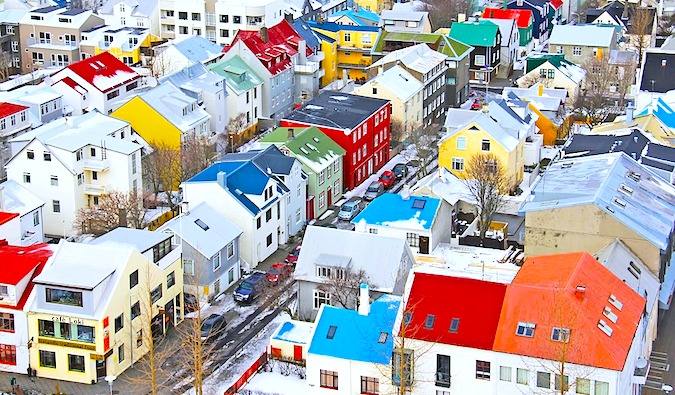
Return to Reykjavík
Hop in the car and head back to the capital city. Stroll the cozy streets, take a free walking tour, and enjoy some of the city’s plentiful happy hours.
See the Golden Circle
Wake up early and drive out to see the three main sites of the Golden Circle. The sooner you start, the better, as you’ll be able to beat the tourist buses there and get some photos without the crowds. You’ll also have time to hike in Þingvellir National Park if you want to stretch your legs. Stock up on snacks for the day in Reykjavik to save some money (the cheapest supermarket is Bonus, so shop there!).
Relax at the Blue Lagoon
If you’re craving another dip in a hot pot, head to the Blue Lagoon before your flight home. You’ll be able to end the trip on a very relaxing note!
Two Weeks: Exploring the Ring Road
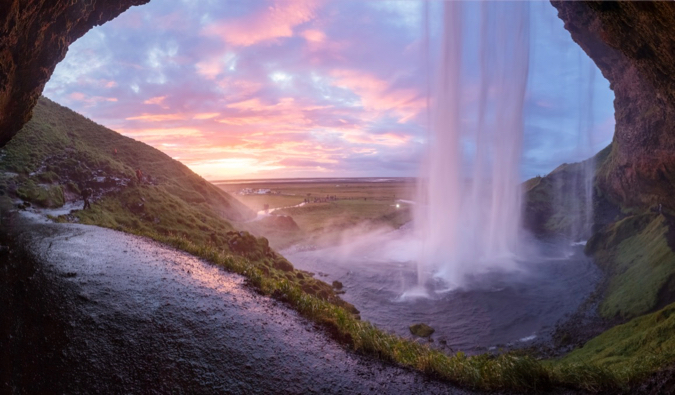
With two weeks, you will be able to drive the entire Ring Road without rushing too much. You’ll have time to enjoy the rugged east coast and places like Seydisfjordur, explore the second-largest city Akureyri, hike around the Snæfellsnes peninsula, and maybe even dip into the Westfjords.
Start in Rekyavik, head east, see Seljalandsfoss and Skógafoss, explore Vík, visit the Jökulsárlón Lagoon, detour over to Seyðisfjörður, then head over to Dettifoss, Mývatn, Goðafoss, and Akureyri.
After exploring Akureyri, continue west to the Snæfellsnes Peninsula for some hiking. Make sure you stop off to see the iconic Kirkjufell mountain, which is one of the most photographed spots in all of Iceland (plus, it’s where they filmed some Game of Thrones scenes, too). Snæfellsnes National Park is home to Snæfellsjökull, a 700,000-year-old volcano capped by glaciers. You can book a glacier hike here or just explore the rest of the park on your own. It’s right along the coast too, so you’ll be met with some gorgeous views. Stay at The Freezer hostel (it has great live music.)
If you have time and want to get off the beaten trail, detour into the Westfjords in the northwest, or visit the Westman Islands off the south coast.
If you want to be more focused on your trip, you can split Iceland up into smaller geographic areas. One fun route to take is to head west to the Snæfellsnes Peninsula, then up into the Westfjords for some hiking and relaxing before flying back to the capital. This will be the most remote part of the country, so you’ll have a lot more space and privacy to enjoy your trip.
One Month: Exploring All of Iceland

With one month, you can see the entire island of Iceland. I’ve met quite a few people who have decided to spend this amount of time in the summer months. They’ll rent a car or camper van, pack a bunch of camping gear, and drive the Ring Road at a leisurely pace. But even if you aren’t renting a van or car, you can get around by bus, air, or hitchhike!
Take multi-day hikes, visit to the less-explored Westfjords, an area many tourists skip due to a lack of time (and paved roads); visit Hrísey and/or Grímsey, the very remote islands in the north with fewer than 100 inhabitants each; or the Westman Islands, or explore more parks in the interior of the country (it’s very remote, very unvisited, and very, very awesome).
If you’re traveling on a shoestring budget and planning to camp and hitchhike in Iceland, you’ll need this longer travel time to make sure you aren’t rushed, as sometimes you’ll be waiting awhile for a lift.
But with a month here, there’s very little you can’t explore!
***
Iceland really does have something for everyone. Whether you’re visiting for a weekend or spending an entire month exploring this rugged landscape, you’ll be able to have an amazing experience.
While it’s not cheap, there are tons of ways to save money in Iceland to make these itineraries doable for even the most frugal budget traveler. But don’t take my word for it. Get out there and explore the Land of Fire and Ice for yourself!
WANTMORE? GET ALL MY TIPS AND ADVICE WITH MY GUIDEBOOK TO ICELAND!
Want to plan the perfect trip to Iceland? Check out my comprehensive guide to Iceland written for budget travelers like yourself!
It cuts out the fluff found in other guides and gets straight to the practical information you need to travel and save money in one of the most beautiful and exciting destinations in the world.
- My favorite things to see and do
- Money-saving tips
- Budget advice
- Transportation advice
- My favorite non-touristy restaurants, markets, and bars
- And much more!
Click here to download the Iceland guide now!
Book Your Trip to Iceland: Logistical Tips and Tricks
Book Your Flight
Find a cheap flight by using Skyscanner or Momondo. They are my two favorite search engines, because they search websites and airlines around the globe, so you always know no stone is being left unturned.
Book Your Accommodation
You can book your hostel with Hostelworld. If you want to stay elsewhere, use Booking.com as it consistently returns the cheapest rates for guesthouses and cheap hotels. I use these all the time. My favorite places to stay in Iceland are:
- Hlemmur Square (Reykjavik) – A posh hotel with a great bar and traditional Icelandic communal dinners several times a week
- Kex Hostel (Reykjavik) – Has a café and bar with an awesome happy hour, a comfy lounge, and a heated patio
- Akureyri Backpackers (Akureyri) – A laid-back hostel with hot showers, a cool bar, and helpful staff!
Don’t Forget Travel Insurance
Travel insurance will protect you against illness, injury, theft, and cancellations. It’s comprehensive protection in case anything goes wrong. I never go on a trip without it, as I’ve had to use it many times in the past. I’ve been using World Nomads for ten years. My favorite companies that offer the best service and value are:
Looking for the best companies to save money with?
Check out my resource page for the best companies to use when you travel! I list all the ones I use to save money when I travel – and I think will help you too!
Looking for more information on visiting Iceland?
Check out my in-depth destination guide to Iceland with more tips on what to see and do, costs, ways to save, and much, much more!
Photo credits: 5, 6, 7, 9, 10, 11, 12
The post Visiting Iceland in 2019: Detailed Itineraries for the Land of Fire and Ice appeared first on Nomadic Matt's Travel Site.
